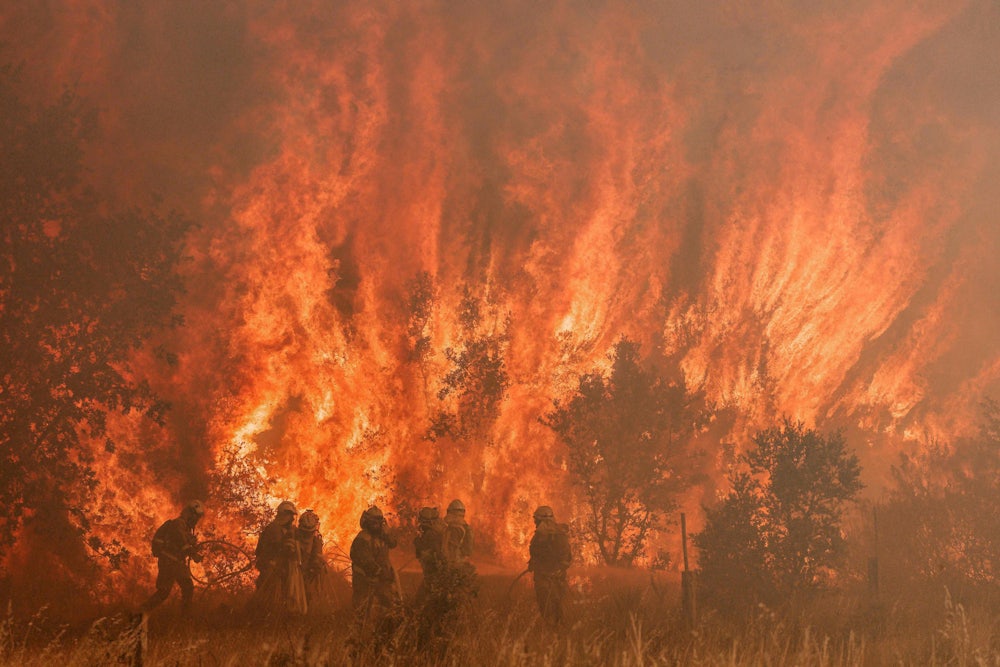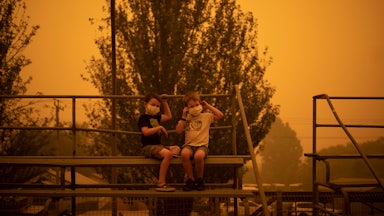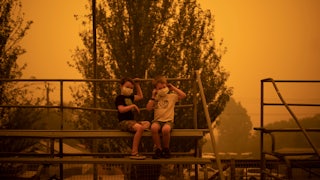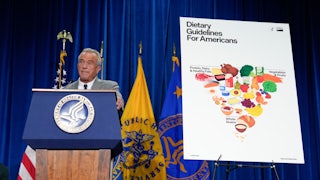When was the last time you expected to see something good on the front page of the paper? Certainly not in this decade. Roughly four in 10 people globally now say they sometimes or often avoid contact with the news, according to a new poll conducted by the Reuters Institute. For more than half of American respondents, it’s simply a matter of mood: Wherever you are along the political spectrum, a growing percentage say the news simply bums them out.
These findings aren’t surprising, but they represent a serious problem—not just for media outlets but also for a democracy that depends on an engaged citizenry. Yet it’s tough to know how to fix this. While major newsrooms often leaven their pages with flimsy “good news” narratives, manufactured positivity isn’t a sustainable long-term strategy. And the current commitment to journalistic “objectivity” gets in the way of what might be a better option: giving readers the harsh truth and telling them how to do something about it.
Nowhere are these shortcomings more obvious, or more problematic, than in climate coverage. For every story about the disastrous consequences of flooding in Yellowstone, there must be a tale (or 12) of a tree species rising from the waters. But this shot-and-chaser model is insufficient. Next steps never quite materialize, and readers are left twiddling their thumbs at what feels like the end of the world. Widespread government inaction only contributes to the feeling that readers are passive victims of the day’s headlines, instead of informed agents of democratic change.
Mainstream American news outlets may think they’re struggling to balance “good news” and “bad news.” But this is the wrong way to frame the issue: In reality, outlets across the country are buckling under the weight of a self-inflicted recommendation double standard. The country’s biggest newspapers are eager to tell their legions of readers what toaster to buy or how to stay hydrated in a heat wave, all under the guise of individualistic “service stories.” Yet any attempt to direct specific or expressly political action is verboten—despite “empowering” citizens being both a stated goal of journalism and a major factor in healthy and sustainable news engagement. When reporters do recommend readers “take action to quell their climate anxiety,” outlets take pains to make sure this advice is as amorphous as possible.
Reforming such a vast and self-important system can feel Sisyphean. Legacy media outlets are notoriously slow to change; many reporters continue to uphold a professional code of ethics dominated by twentieth-century myths of “objectivity,” despite the fact they patently fail to meet the demands of the current moment. Meanwhile, newer sites often lack the resources to defy the demands of Google Search, Apple News, Facebook, and other aggregators that prioritize certain types of hive-mind content above the rest. Even so, change is possible. By taking a page from advocates for safer suicide reporting, it’s possible to tackle news avoidance and support climate change without compromising any journalistic principles.
Suicide is often deemed a newsworthy event—the death of a celebrity, the use of self-immolation as a protest tactic, or new data on suicide rates nationally are all certain to receive some measure of coverage. But in cases where stories describe suicide methods, mass media coverage has led to a demonstrable increase in copycat deaths, making the stakes for reporting on suicide painfully high. That’s why, in 2001, the Centers for Disease Control and Prevention and its partners at the American Foundation for Suicide Prevention, Annenberg Public Policy Center, and elsewhere published recommendations for reporting on suicide. In addition to avoiding descriptions of method, the experts recommended including suicide prevention resources in every story, in the hopes of connecting people in crisis with immediate support.
In the decades since the first guidelines were published, research shows the news industry was slow to change. But though one might still read a story that violates one or more of these recommendations—sometimes flagrantly—today, new generations of journalists have come up with the guidelines and uphold them in their work. In particular, the inclusion of suicide prevention resources has become almost second nature, as many stories dealing with suicide, or mental illness more generally, now end on a note like this one: The National Suicide Prevention Lifeline is a hotline for individuals in crisis or for those looking to help someone else. To speak with a certified listener, call 1 (800) 273-8255.
Publicizing the numbers worked, and still does—at least when evaluated in the immediate aftermath of media coverage. When news outlets publish hotline numbers, calls go up, and the available evidence suggests hotlines can reduce distress and stop a significant number of people (almost 80 percent, in one self-reported study) from killing themselves in the moment. Unfortunately, quality long-term data doesn’t exist, and many Americans face serious barriers to fully fledged mental health care after they hang up. But just as having more research is needed, “having supportive people there to talk to you when in need … seems like a humane, logical thing to do even in the absence of evidence,” Matthew Nock, a professor of psychology at Harvard who studies suicide, told Vice in 2018.
News avoidance, climate anxiety, and related feelings are, of course, a radically different problem from copycat suicides. Yet the two issues have more in common than you might think. Research shows that consuming excessive amounts of bad news is harmful for readers’ health. Climate anxiety and depression appear to hinder climate action. And inaction or, at best, individual solutionism can never match up to a global crisis.
These commonalities seem to indicate that a simple and widespread intervention in the cycle of self-harm—publicizing hotlines—might help people out of a downward climate spiral too. While the evidence is still accumulating, environmental psychologists have long argued that the only way to deal with feelings of powerlessness in the face of climate change is to get involved—whether that starts with preparing a disaster go-bag, finding community to share concerns with, or canvassing for a green politician.
It’s easy enough to imagine what a hotline could offer here: At the most basic level, a 1 (800) number could be easily plastered on billboards, memorized for repeated dials, and added to the bottom of every climate story and end of every environmental podcast without a second thought. The hotline could at once redirect people in crisis to mental health hotlines and connect voters to the voicemails of their state and local representatives (like the #Call4ClimateNow service). Most importantly, trained operators could use a caller’s zip code to help direct them to specific organizations in need of donations, upcoming protests in which to participate, and volunteer opportunities—depending on their interests and abilities.
Crucially, a hotline could also be compatible with the way journalism is done today, when climate action remains so urgent. Journalists want to give people the unvarnished truth, without being accused of political bias. Readers “need hope to get out of bed,” as journalist Amanda Ripley wrote in a recent Washington Post essay about news avoidance. But they also need a sense of concrete actions that can change the world. A 1 (800) CLIMATE hotline could help newsrooms balance impartiality with empowerment. It alone won’t solve news avoidance, or climate change, but it would provide callers with a “choose your own adventure” instead of the usual dead end.










